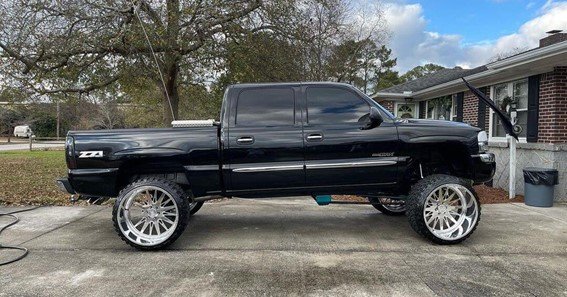In the automotive customization world, various trends emerge, each with its unique appeal and controversy. One such trend is the squatted truck, a modification that has garnered attention for its distinctive appearance and the debates it has sparked.
What Is a Squatted Truck?
A squatted truck, often referred to as the “Carolina Squat,” is a vehicle modification where the front end of a truck or SUV is raised higher than the rear, creating a noticeable downward slope from front to back. This alteration gives the impression that the vehicle is “squatting.” The modification is typically achieved by installing a lift kit on the front suspension while leaving the rear suspension at its original height or even lowering it.
Origins of the Squatted Truck Trend
The squatted truck trend traces its roots to the off-road racing culture, particularly the Baja racing scene in California. In these races, vehicles were modified with higher front suspensions to handle the rough terrain and to prevent nose-diving during jumps. Over time, this functional modification transitioned into a stylistic trend, gaining popularity in various regions, notably the Carolinas, hence the nickname “Carolina Squat.”
Reasons Behind the Popularity
Enthusiasts of squatted trucks often cite aesthetic appeal as the primary reason for the modification. The unique stance sets their vehicles apart, creating a distinctive look that stands out on the road. For some, it’s a form of self-expression and a way to showcase their individuality within the automotive community.
Safety Concerns and Criticisms
Despite its popularity among certain groups, the squatted truck modification has faced significant criticism due to safety concerns:
- Reduced Visibility: The altered angle can impair the driver’s view of the road, increasing the risk of accidents.
- Handling Issues: Modifying the suspension in this manner can negatively affect the vehicle’s handling and stability, especially during emergency maneuvers.
- Headlight Misalignment: The upward tilt can cause headlights to point skyward, reducing nighttime visibility and potentially blinding oncoming drivers.
Legal Implications
Due to the aforementioned safety concerns, several states have enacted laws banning or restricting squatted trucks. For instance, North Carolina and Virginia have implemented regulations prohibiting modifications that raise the front fender more than a certain number of inches above the rear fender. Violations can result in fines and, in some cases, vehicle impoundment.
FAQ
- Is it legal to drive a squatted truck?
- The legality varies by state. Some states have banned the modification due to safety concerns, while others have no specific regulations. It’s essential to check local laws before modifying your vehicle.
- Does squatting a truck affect its performance?
- Yes, altering the suspension can impact handling, braking, and overall stability, potentially compromising safety.
- Why do people squat their trucks?
- Many do it for aesthetic reasons, aiming for a distinctive look that sets their vehicle apart.
- Are there any benefits to squatting a truck?
- Beyond personal aesthetic preference, there are no practical benefits; in fact, it can introduce several safety and performance drawbacks.
- Can squatting a truck void the warranty?
- Modifying the suspension can void parts of the vehicle’s warranty, especially if the modification leads to damage or affects vehicle performance.
In conclusion, while squatted trucks represent a unique automotive trend rooted in off-road racing culture, it’s crucial to consider the associated safety concerns and legal implications before undertaking such modifications. Always prioritize safety and compliance with local regulations when customizing your vehicle.
Take a look at this interesting piece 89-gas-in-a-2015-n55-335i










